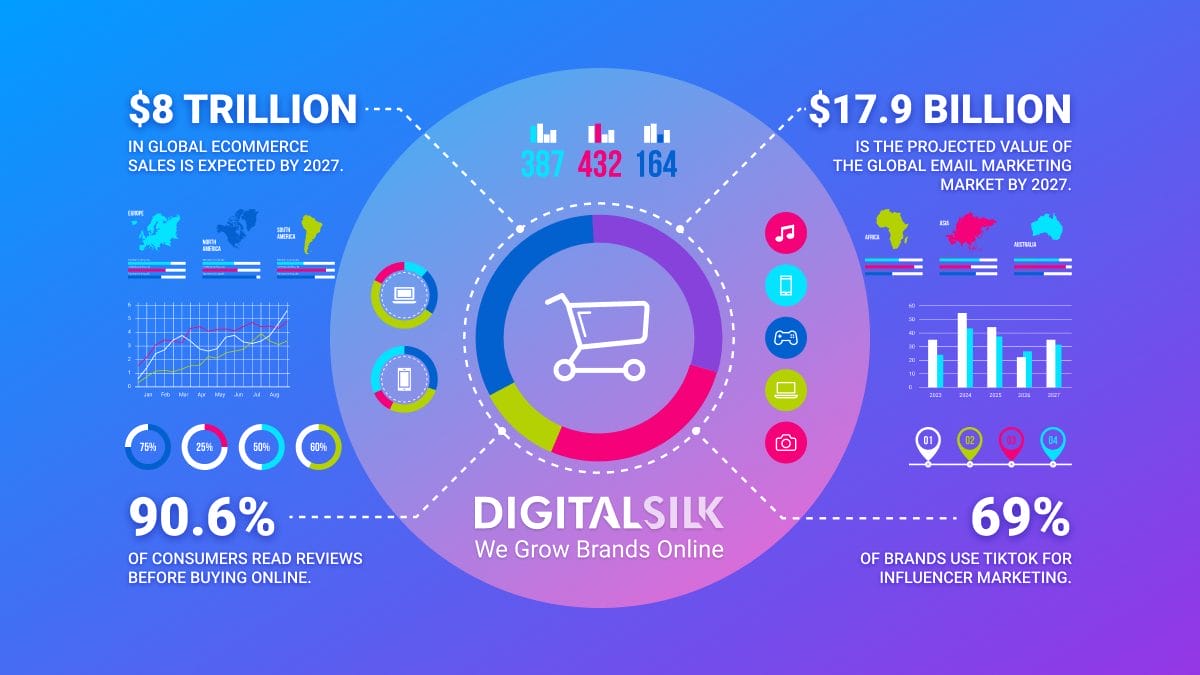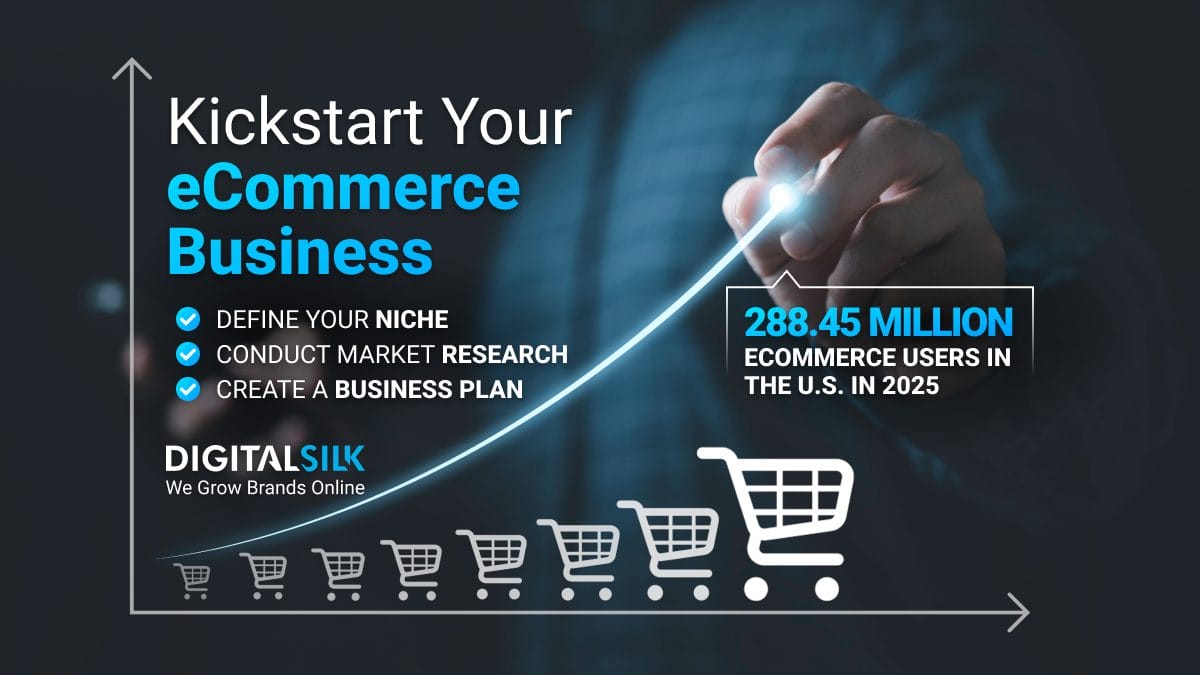The riskiest age for most businesses is their first 2 to 5 years on the market. As many as 70% of them fail during this time.
Among the most common causes that stifle business growth and, eventually, lead to failure are:
- Lack of need for their product or service on the market
- Financial issues
- Poorly assembled team
- Tough competition
- Cost issues
In this article, we will address the ways in which you can overcome these potential roadblocks and ensure your startup or small and medium enterprise (SME) grows and reaches market stability.
Work with our consultants. Request a quote
Business Growth During Startup Stage: Key Challenges & Areas To Focus On
Running a startup company often feels like having a mountain to climb: owners and managers have to find ways to overcome the fact their business is unknown to a larger audience.
They also need to account for achieving financial stability and attracting valuable hires, all the while balancing fragile sustainability.
These are the five most common obstacles to startup growth – and solutions for each.
1. Fierce Competition
For startup businesses, competition is one of the biggest challenges and threats to their very survival.
This especially goes for online businesses where the competitive corporate environment allows no margin of error.
Both B2C and B2B startups feel the pressure coming from their numerous competitors, a good deal of which are already established names on the market.
What to focus on:
- Play aggressively: Both digitally native and traditional startups must punch above their weight to survive this competitive onslaught – which means taking on big projects and directly competing against the opposition that outweighs them. This will gain them the recognition they sorely need at this stage as well as the respect from similar expanding businesses.
- Build on your strengths: Try not to focus so much on your competitors and make yourself the center of your attention. Your offering should offer more value than your competition, such as competitive rates, better quality or unique benefits. Finding your product’s edge and making the most of it is often the difference between success and business failure.
2. Recruiting The Right People
After making the first several hires – usually, these are the people who start the entire enterprise – startup companies often face difficulties finding and attracting skilled people.
Unlike the original employees, who were willing to work long hours for smaller wages in exchange for exciting and potentially highly rewarding business experiences, new hires are not eager to take on the same sacrifice.
The most skilled candidates were already through it all with some previous startup companies they worked with and know what risks and pressure they would be facing with your startup.
As a result, they are not as willing to go back to working under such circumstances, potentially with certain budget limitations.
What to focus on:
- Forge a healthy business culture: To expand their team successfully, startups should present an impactful vision of themselves, their mission and their differentiator values to employees and candidates in order to hire the best individuals in the business.
- Name your desired outcomes: When recruiting people for a startup, map out the desired outcome instead of looking to hire specific titles. Think in terms of immediate actions that will have the biggest impact on achieving a certain goal. Also, think about which aspect of the business will benefit from someone taking over. Hiring “the best fit” is dependent upon matching candidates to your most pressing objectives.
- Create a powerful job description: When you establish your startup’s core values, competencies and tasks, you should create an attractive, self-explanatory job description for a needed team member. When doing that, ask yourself what tasks will this person be responsible for achieving that goal before emphasizing the most attractive aspect of the position.
3. Cash Flow & Financial Management
When income increases, costs and expenditures also increase. Financial management is one of the most severe challenges startup businesses face, because money begets money.
Investors are very important for startups because they often rely on their financial support and backup. These small, new enterprises usually find it hard to manage their finances when there is a cash influx.
However, relying on investors is a fickle and potentially hazardous tactic. With a bit of advance planning and careful focusing, you can achieve good financial management on your own.
What to focus on:
- Play it safe and reach out to financial experts: To address the cash flow situation in the most painless way possible, startups should be cautious and ask for help from financial consultancy experts that can help in managing their finances.
- Manage your costs: Startup owners should keep financial statements about their income and expenditures and know, in great detail, all about
- The income statement, which contains the revenue made in a specific period
- Cash flow statement, which is the analysis of investment and operating activities
- Statements of shareholders’ equity – the funds your business gets through common shares
- Balance sheet, which reflects shareholders’ equity and company assets
- Plan your taxes: Taxes are a fact of life and your business can run effectively if you understand and plan them. Take a deep look into your expenditures, purchases and timing of revenues to save money and reduce tax liabilities. To master taxes, your business must:
- Have a bookkeeping system
- Maintain a relationship with a reliable accountant
- Not mix up personal and company transactions and accounts
- Have a retirement option that is tax-deductible
4. Winning Customers’ Trust & Loyalty
For new startup businesses, attaining customers and their trust is one of the most challenging obstacles. Their brand and the quality of their products and services are all unknown to wider demographics.
Winning customers’ trust and creating a base of loyal customers is vital for scaling and growing. It is no overstatement that customers really are the decisive factor and the driving force behind any startup’s success or failure.
Through their customers’ social media activity or simple word-of-mouth, startups can gain a fair advantage over other competitive businesses – if they form strong bonds with their audience.
What to focus on:
- Implement a customer-centric philosophy: All of the startup’s employees should be on the same page that the customer is the king and that customer loyalty and trust are crucial for attaining sustainable growth and company progress.
- Create a social purpose for yourself: Today’s customers value brands that show social responsibility and purpose. Your social conscience must come across as authentic and caring. Modern brands are much more than just selling products and services – they partake in social life and build a better community.
- Find ways to share profits: Giving away shopper credits and points your customers can use later are a good way of sharing a part of your profits with your audience. This sharing approach helps build a loyal customer base and increase turnover.
Speak with our experts. Set Up A Consultation
Growing A Small Business: Key Challenges & How To Overcome Them
Small enterprises that are past their startup phase encounter new obstacles during their next stage in the life cycle.
These challenges can pose a threat to their very survival if not treated methodically. But if overcome, SMEs can gain plenty of organizational strength and experience they can thrive on in the future.
1. The Question Of Growth vs. Quality
When a small business grows beyond expectations and product and service production needs to increase to meet the demand, business owners and decision-makers may find themselves in hot water.
If a business does not have adequate processes and mechanisms to handle this situation, it may fall short of growing demands. This may affect the quality of products or services and that’s when growth can become an issue and adversity.
These failures to answer to growth challenges leading to a decline in quality often stem from excessive personal engagement and obsessive attention to detail. Simply put, decision-makers’ and owners’ habits hinder the company’s growth.
What to focus on:
- Sacrifice in order to scale: It is important to scale up the small business so as not to sacrifice the quality of products or services that initiated the growth in the first place. The sacrifice in this means not personally managing every client relationship or not inspecting every hook and turn in the production process. Owners must navigate the small business’s process to a compromise that allows scaling the brand.
2. Dependence On A Small Number Of Clients
Small businesses that only have one or few clients that make up their income risk severe consequences in the event these clients decide to unexpectedly cancel their contract.
This scenario just might work if a client has a constant need for your services, but that is always subject to change. It is better for a small business to have a diverse base of clients that can pick up the slack in case one of them leaves.
To diversify a client base means to grow your business. However, for businesses that aren’t yet a household name, finding new customers can be a challenge.
And when they do find clients, it is doubly important that they pay on time for a product or a service.
If, on your list of clients, there is a single client who is responsible for more than half of your income, you should either generate more clients or make a better deal for the said clients.
Letting a small business rely on just one client is a potential disaster for a company.
What to focus on:
- Spread the word to the right people: You should have a clear overview of who your target clients are, what they look like and what their buyer persona is. Crafting a buyer persona can improve your business results because you can create content, messaging and marketing campaigns that speak to them in the most optimal way.
3. Increasing Brand Awareness
65% of marketing leaders believe that a brand is a critical driver of buyer behavior on existing customers, and 58% believe it impacts prospects.
Behind the scenes of every company that has achieved visibility and brand awareness are both hard work and failures. Generating brand awareness is one of the most challenging aspects of running a small business company.
Below are some strategies of spreading the word about your SME brand to begin building a brand reputation.
What to focus on:
- Use content marketing: Blogging and content marketing educated audiences, increases brand awareness and builds credibility and trust. Successful content marketers have a well-laid out strategy that is consistent and cohesive with their target audience and business goals. Great blog articles drive traffic to your website and convert that traffic into leads by being informative, relevant and educational.
- PR generates awareness: Public relations is about focusing your brand voice and finding your share of the market. Try to figure out which outlets are covering your industry and building relationships with audiences.
- Co-marketing is also effective: By partnering with another brand, your small business can adopt some of their established image, creating brand ambassadors that are outside your company. It’s also a great way of gaining new valuable contacts.

4. Complying With Government Regulations
Governments often come up with regulations that can hinder the internal functioning of an enterprise and its external business ventures.
In fact, these regulations cost the US economy $1.9 trillion a year in lost productivity and direct cost. SMEs with less than 50 employees experience costs 20% higher than all other firms’ average.
Government brings advertising and environmental regulations, for instance, into law to protect certain groups or improve the living environment. And while they are not bad as such, they can make life difficult for SMEs who don’t have the environmental know-how or means to comply, or whose advertising restrictions may impact their revenue.
In short, excessive federal regulations can choke business growth and drain businesses of their funds.
What to focus on:
- Remain vigilant: SME business owners should keep an eye on any governmental regulations coming around the bend and begin implementing solutions to soften the possible blow.
- Use accounting software: These programs help small business organizations save time on preparing and tracking their invoices, and financial reports and managing recordkeeping, automatic tax calculations and expanse management.
- Reach out to community resources: There are community resources such as local business organizations, business coaches, small business development centers, the Chamber of Commerce and others that can help SBEs with following regulatory updates or getting help from business leaders and owners, marketers, legal experts and so on.
5 Assets Startups & SMEs Need To Boost Growth & How To Build Them
The direction in which your startup or SME will grow depends on a lot of factors, particularly the niche you’re in and the curiosities of the specific market.
But no matter the vertical, there are certain common denominators that all young companies should apply in order to maintain sufficient business growth and financial stability.
1. Business Strategy
For startups and SMEs, a business strategy is a way to efficiently coordinate all business operations in order to reach company objectives.
Also, having a business strategy matters because it sparks a conversation within a company and conversations give birth to ideas and visions. These, in turn, will help you define your business’ future and goals.
How to build it:
- Develop a vision: A vision statement is your glimpse into the future. Visualizing your business’s future greatly enhances the odds that you will reach it. A vision includes aspirations for the type of company you want to become and helps define success in clear terms.
- Define your advantage and unique value: What sets you apart from the competition? This is one of the first questions you need to ask yourself in order to deliver unique value to your customers. A business strategy that is well-developed must contain tactics for creating a space that sets you apart from the competition in terms of what you offer.
- Define your targets: Bad targeting hinders growth and companies who don’t have very specific targets also can’t get their messaging right. This causes a misalignment between sales and marketing. On the other hand, clear targeting creates an integrated marketing and sales strategy in which marketing boosts sales productivity.
- Make decisions based on facts: Good data is very useful when forming a business strategy. The age of the internet has made quantifiable data and valuable facts easily attainable. Whatever decisions you make, make sure they are backed by well-researched facts and nonambiguous results.
- Measure results and execute: Business strategy should be actionable, meaning that the very best of businesses:
- Track their strategic action plan on a monthly level
- Use KPIs that align with the strategy
- Have goals that make everyone’s role important within the organization, reach every department and resonate with staff
- Set up productive meetings and establish a performance management cycle that supports objectives
2. Marketing Strategy
Marketing strategies help define the channels you should use to market your business. Knowing these channels makes it possible to budget for promotions, ad campaigns and events.
Marketing strategy matters because it:
- Establishes marketing objectives
- Helps you target the right audience
- Engages all sectors of the company to think in marketing terms
- Provides a ground zero for consistent actions across different channels
How to build it:
- Establish your marketing objectives: Goals and objectives specify measurable outcomes that can help you evaluate the effectiveness of a marketing strategy. They help you align expectations and plans and coordinate efforts. Key objectives should be specific, measurable and have a time frame.
- Determine your value proposition: Marketing strategy should surface from a value proposition that contains your business’s main strengths and differentiators. The value proposition is an important conversion factor, it must solve customers’ problems and can make or break a sale. Identify your customers’ main benefits from the value your products provide to them.
- Decide on marketing methods: Picking the marketing methods and channels will depend on your target audience and the platforms they use. These channels will be your platforms to explain, teach and communicate your brand messaging and product values. Find out where your audience mostly lives – what social media, blogs, websites, forums – and determine how much money and time you can invest in PR, content marketing, SEO and other types of marketing.
- Start blogging: Content marketing, especially blogging, is very effective in building trust with your customers, providing value to them and building your authority. Do some research on the internet to find out what your audience is interested in and what content would answer their most common questions.
- Optimize for search engines: You have full control of your website and the content on it. By optimizing both your website and your content for search engines you can increase your visibility and the audience can find you more easily. This is a very cost-effective way of marketing your business – minimum expenditure that can provide great ROI.

3. A Strong Digital Presence Starting With Your Website
A digital presence refers to how a business appears and performs online. It encompasses channels that business owners have control over, such as the brand’s website or social media pages.
It also includes certain third-party channels such as online reviews and user-generated content.
A digital presence is important for startups and SMEs because it provides something they desperately need at their earliest life-cycle stages: two-way communication with their customers which establishes a lasting relationship.
The benefits of having a well-developed digital presence are:
- Good visibility: Digital presence makes it possible for your business to be present everywhere at the same time. Thousands of potential customers can see your business and learn about your services.
- Authority building: Using your digital presence to publish relevant, informative content and post educational videos can, in time, turn you into an industry authority and show your potential customers why they should do business with you.
- A positive first impression: By being able to control your online image, you can also control what your customers’ first impression of you will be. Your potential clients will always notice a quality digital profile and, in business, a positive first impression is the most important.
- 24/7 availability: Unlike physical stores, your online presence doesn’t have working hours. It’s always open for all to provide information or sell products or services. A strong digital presence can lead to making profits even when you’re not actively doing anything.
How to build it:
- Create a quality website for your business: Your company website is your business ID. All small businesses and startups should have a website that contains the most fundamental information about you as a brand, your products and services and what differentiates you on the market.
- SEO: Optimizing your website for search engines makes it easier for them to find your website and serve it to users on a search results position according to the level of your optimization. 89% of consumers use search engines to research a product or a service before making a purchase decision.
- Social media: The unavoidable part of the digital presence of today is having your business pages on social media like Facebook and LinkedIn. These channels help you communicate directly to your customers, build customer loyalty and boost levels of your customers’ engagement.
Speak with our experts. Schedule A Consultation
4. A Recognizable Brand
Building a recognizable brand is a complex process that involves:
- Building visual imagery and design for all your business elements
- Coming up with a unique brand voice and messaging
- Establishing and promoting your core brand values
- Creating a consistent presence across all channels
Branding is important because it:
- Gives your customers the mental image of your business
- Differentiates you from your competitors
- Creates an emotional bond with your customers
- Boosts customer loyalty
- Wins the attention of your ideal customers
How to build it:
- Build human connections by focusing on storytelling: Stories backed by an excellent product or a service and not product features should be your focus when establishing a strong brand presence. By making a deep impression on consumers, a brand impacts their behavior. Customers are motivated by emotions and experience, first and foremost – then by information, features and facts.
- Always strive to provide value: By creating content that is relevant to what you do and what your audience is interested in, that solves their pain points and helps them make well-informed decisions, you will provide value to your audience. This creates longer-lasting relationships with customers and even makes brand advocates out of them. Understand your customers’ journey and, according to the stage of it, present them with content that fits with where they are.
- Be customer-oriented on your website and social media: Focusing on channels relevant to your target audience and providing great customer service there is one of the surest ways SMEs and startups can grow. According to one report, businesses with social customer service experience around 7.5 percent year-over-year growth.
- Come up with a brand voice: Knowing your target audience and establishing your brand core values is a foundation for a brand voice. Brand voice is how you present your business to the world, and how you talk to your prospects and customers.
5. The Right Partner(s) To Delegate Non-Essential Projects To
Strategic agency partnerships help businesses acquire highly specialized experts and consultants more efficiently than recruiting in-house.
The advantages of outsourcing the non-essential roles to specialized agencies include:
- Flexible contracts
- No overhead
- Managed resources
- Access to the top talent and know-how
- Access to high-end industry-specific tools
- And more
You can also delegate some sensitive internal tasks to company team members in order to make them grow as employees, too. You need to make sure that you monitor their progress, especially with their first tasks.
How to make it happen:
- Identify who to delegate internal sensitive tasks to: There are several ways you can go about doing this:
- Find someone you already trust, ask for volunteers or choose someone with availability
- Identify task-focused employees to delegate repetitive work to
- Project management tasks should be delegated to confident and experienced team members
- Organized employees that don’t miss a deadline should handle tasks with due dates or scheduling
- Newer members can handle the smaller task to develop skills and gain confidence
- Trust your agency partners and verify: After you’ve hired a trustworthy partner, delegated a task to them and set a deadline, verify that the process is underway and will be completed. Communicate openly with your partners, have them update you on their progress to make sure the deadline will not be broken and that everything is going according to plan.
- Delegate proactively: Before it’s too late to delegate any meaningful tasks to people competent enough to handle them, step in with your delegation timely and proactively. Don’t wait until you have too much on your plate: try and recognize when the work is piling up and address it before it’s too late.
- Be clear with your expectations: Before delegating a task, make sure you’ve communicated your expectations clearly. There is very little room for misunderstandings in handling sensitive tasks, especially for smaller businesses.

How To Create A Business Growth Plan
You, as an owner of a startup or an SME, should be aware of the four major business growth strategies that can help establish the mode on which you will build your brand.
These four growth types are:
- Development: A business growth strategy that is actively looking to break products and services into new markets when the current market either stifles growth or reaches its limits.
- Market strategy: With this tactic, your business plans how to approach the target audience. Instead of focusing on entering new markets or creating new products or services, your business looks to leverage what it currently offers, such as pricing or marketing campaigns.
- Product strategy/development: With this strategy, the focus is on coming up with new products or services to target the current market with. It’s about growing your business without penetrating new markets and answering what your existing customers are asking for.
- Diversification: The growth strategy that looks to expand both the target markets and the product/services offering. Small businesses that can afford versatility with their products and planned markets to expand usually find this strategy the most effective.
Next, your startup or small business should write a growth plan.
The difference between this and a business plan is that the growth plan focuses on defining the expansion and ways to achieve it. It helps with keeping growth efforts on track and it contains these elements:
- Opportunities for expansion and their detailed description
- Quarterly and yearly financial goals
- Marketing plan for achieving growth and said financial goals
- A financial plan that establishes the capital and budget you will have for your growth
- A detailed breakdown of your employees’ responsibilities and duties
Takeaways On Business Growth For Startups & SMEs
In a very delicate stage of their respective lifecycles, startup and small business enterprises are up against a range of serious challenges that can slow their growth.
However, by utilizing and developing the five operational and strategic assets we have discussed in this article, companies of all profiles can strengthen their current position and pave the way for the phase of greater security, market expansion and turnover rise.
To help their businesses grow and succeed, startup and SME owners should use these assets:
- Business strategy
- Marketing strategy
- A digital presence
- A recognizable brand
- Strategic agency partnerships
"*" indicates required fields









